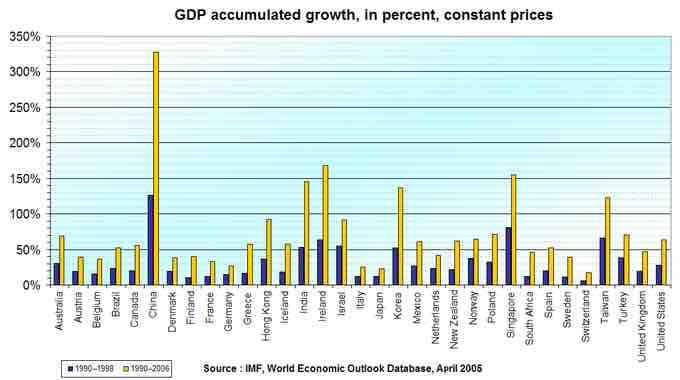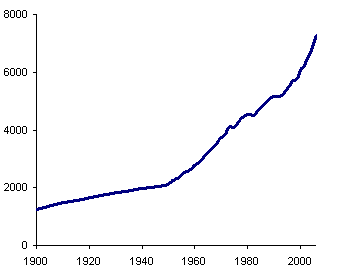Comparing historical economies and economic trends over the course of human history is a difficult endeavor, as the comparisons are not always equal. The evolution of trade and the construction of measurement systems, currencies, standards, and the accuracy of historical record present a challenge to economists evaluating economies over time. That being said, timelines have been generated that capture useful insights, and modern economic comparisons (country to country) are growing increasingly accurate. Both of these perspectives shed light as to the overall patterns of economic growth over time.
Relevant Time Periods
For the sake of this discussion, four general time frames are useful to highlight:
- Stone Age: Including the Paleolithic, Mesolithic, and Neolithic time frames (up to 3500 B.C.), economics was virtually basic trade between small, local groups. This age is particularly worthy of note due to the crucial development of bartering and specialization. Specialization refers to the fact that a small group of people performing (and specializing) in different tasks can create substantially more value than every individual learning all tasks (think of Henry Ford's assembly line).
- Antiquity: This includes the Bronze Age and the Iron Age, antiquity spans from 3500 B.C. around 500 A.D. As the names imply, the leveraging of natural resources (such as metals) were a critical step forward for trade. During this time frame the Babylonians are credited with generating the first metric to measure economic value (i.e. currency), and standardizing trade through leveraging this metric. This is an absolutely critical component to the ultimately measurement and comparison of economies from this time period forward.
- Middle Ages: The Silk Road is a famous economic historical element of this time frame, as is the creation of the first official paper currency (or banknotes) by the Tang Dynasty in China around the 9th century. The Middle Ages stretched from 500 A.D.-1500 A.D., and eventually saw the roots of accounting and financial trade roles in society.
- Modernity: From 1500 A.D. forward, trade grew increasingly global and increasingly standardized as a result. This era is marked by the Industrial Revolution, and the exponential productivity growth inherently found in technological advancement and standardized education systems. As the 20th century dawned, real world GDP is estimated to have quadrupled as a result of the advances in industry (see ), technology and intellectual innovations. Subsequently, population expanded as well.
With these four eras in mind, it is easy to empathize with economists attempting to unveil relative economic strength in the context of capitalist evolution. The modern age provides the most consistent data in which to analyze growth.
Comparing Modern Economies
Modern economies have been consistently measured for growth over the past couple centuries, underlining useful economic data on overall growth between nations. To simplify these comparisons, economic growth is generally assessed as general GDP (or increased productivity within a nation). The figure demonstrates these comparisons between 1990 and 2006, with a few countries standing out (China in particular).

GDP Growth Across Nations
This graph underlines the important fact that economic growth is not mutually or equally distributed, resulting from a wide variety of factors with external and global systems.
Over time, countries can change significantly, and these changes must be considered in order to make accurate comparisons. Inflation, for example, changes the value of one unit of currency across time, so comparisons across time should be made using Real GDP, a GDP index, or another measure that accounts for changes in price.
There are also a number of other factors that must be taken into account such as GDP per capita, energy consumption, pollution metrics, education levels, innovation, etc. As you can imagine, it is difficult to compare countries across large time horizons, but, after controlling for as many of these effects as you can, comparisons are possible.

Economic Growth in the 20th Century
As a result of technological advances and increased intellectual capacity, real productivity increased by over 400% during this time frame.